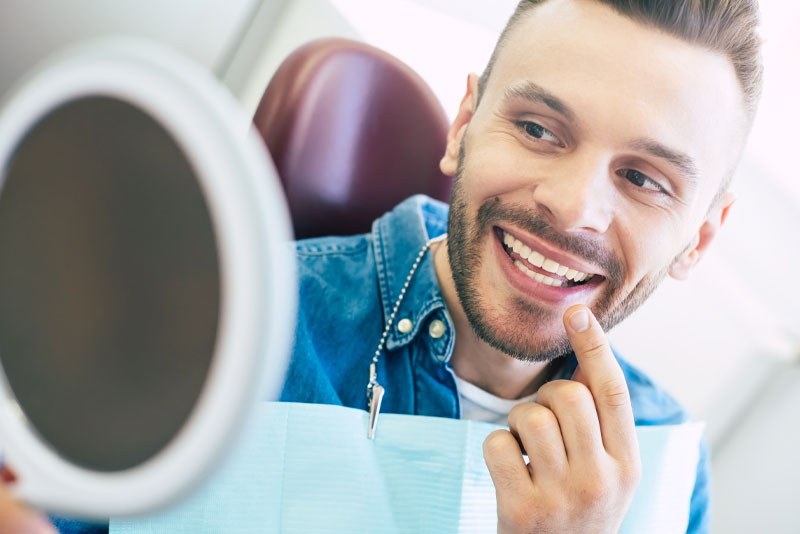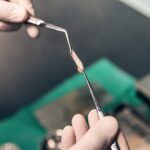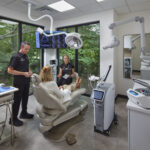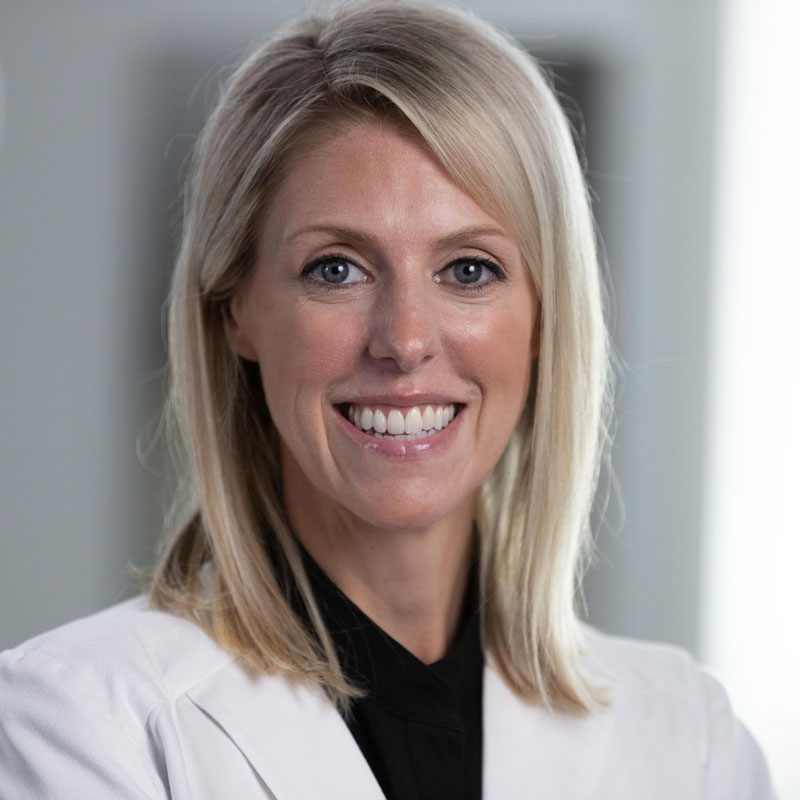
Please see above for our patient M.Y. before and after photos. Her roots are covered and tissue improved for a healthier and more aesthetic smile! Dr. Anderson used autogenous grafting with a tunneled approach.
Gingival grafts are used to cover exposed roots and create a stronger foundation for the teeth. Gum deficiencies can be corrected with tissue harvested from your mouth or from other sources. Depending on the presentation, there are 3 general graft materials. Please see below for grafting descriptions:
Autogenous “from self”.
These grafts are taken from the palate or roof of the mouth. Autogenous grafts can come from tissue on the surface of the palate (epithelium) or the layer below (connective tissue). Autogenous grafts are vital (living) and bring vascular (blood) supply and beneficial healing cells. Supply is limited to the anatomy of the patient and location/thickness of desired tissue on the palate.
Allograft “from another of the same species”.
Cadaver dermis or skin is sterilized to make it devoid of living cells, proteins, viruses, and bacteria. After treatment the graft slowly turns into your gingiva or gum and blends well with your tissue. Allografts are non-vital or non-living and do not provide vascular or blood supply. Supply is unlimited as it is custom ordered for each patient.
Xenograft “from another species”.
Much like the allograft, xenografts are sterilized and used in a similar manner. These grafts are derived from either bovine (cow) or porcine (pig) dermis (skin). Xenografts are non-vital (non-living) and do not provide a vascular supply. Supply is unlimited as it is custom ordered for each patient.
As a diplomate and board certified periodontist, Dr. Lauren Anderson provides services involving dental implants, periodontics, tooth loss, implantology, crown lengthening, cosmetic dentistry, and plastic surgery in Birmingham, Troy, Bloomfield Hills, West Bloomfield, Troy, Ferndale, Royal Oak, and surrounding Oakland County, Michigan. To schedule your consult please call (248) 480-4910





